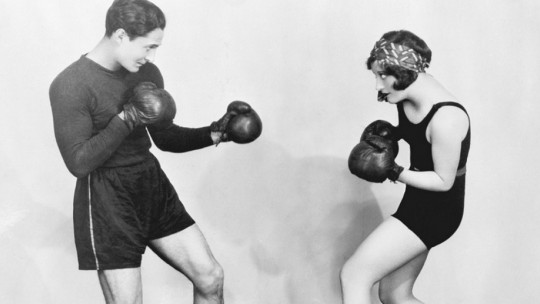
We point out the differences between men and women, from the trends that are observed. There are some statistical parameters that lead to conclusions that, for the most part, define men or women more.
It would be something like saying: “on average, men have bigger feet than women.” It is clear that there are many women who have larger feet than many men, but The trend is that men have larger feet than women
What are the main psychological and biological differences between men and women?
We know that the female child identifies with her mother to build her feminine identity, in the same way that the male child identifies with his father to cement his masculine identity. Other figures, male and female, revolve around the father and mother, who also influence and add to the construction of sexual identity.
Although the nature of man and woman is clearly different, during our development and based on the masculine and feminine references we receive, we will acquire more of one or the other depending on how practical and effective they are for our general functioning.
Although men and women agree that we are part of the same species, and we can consider that there is more that unites us than what separates us, here we will focus on what differentiates us, which is no small thing.
These are the 7 big differences between men and women that we have synthesized here, among many others…
7 differences between women and men
1. Differences in chromosomes
Since conception, the approximately 100 trillion cells that make up the body of men and women are different In man, all his cells are male, the Y chromosome identifies him. A single Y chromosome of the 23 pairs that make it up is enough for subsequent development to be male.
2. Sexual drive
The latest studies compiled by the neuropsychiatrist Louan Brizendine (2008) demonstrate that in the brain areas, the medial pre-optic area (MPA), which is where the sex drive, It is 2.5 times greater in men than in women Man needs that impulse, not only to experience his sexuality, but also to go out into the world, assert his strength, and conquer, among many other capacities that derive from sexual energy such as drive, courage, courage, creativity, initiative and clear direction.
3. Different hormones
At the hormonal level, in women estrogen the progesterone and the oxytocin They establish a relationship with the brain circuits to promote specifically feminine behaviors. In men, the testosterone vasopressin and a hormone called SIM (Müllerian Inhibitory Substance).
4. Games for boys and games for girls
As much as parents, adults and educators try to influence, it has been proven that Girls tend to play calmer games like house or dolls while Children tend to play games with greater movement, fighting and action
As Louann Brizendine tells us, “In an Irish daycare, researchers observed boys taking girls’ kitchen toys and even unscrewing the miniature sink faucet key to use its parts as toy weapons. “At the same time, they turned spatulas into swords to fight the bad guys and used beans as bullets.” Thus, it seems that the preference for one or another toys and games has a lot to do with the culture in which we live, and perhaps also with some biological differences between boys and girls.
5. Expression of feelings
The woman externalizes her feelings, the man tends to internalize them and relativize them Women are characterized by their ability to express themselves, to communicate what they think and what they feel; The attitude of silence and few words predominates in man. The woman needs to talk about her conflicts; man only speaks (if he does), when he has already resolved them. He communicates the word to women; men the action, as a general rule. Luckily, these trends seem to be changing, and more and more men feel the need to express what they feel despite the roles and clichés that society imposes on them.
6. Feminine and masculine language
Masculine language gives preference to specific topics referring to how things work and the outside world, the objective world. Female language is more everyday, more subjective, linked to feelings and the inner world.
Linguist Deborah Tannen (2007) explains that since childhood, Women basically use language to seek confirmation from others and strengthen their intimacy Men, on the other hand, use it above all in order to maintain their autonomy, independence and social position. General trends for which there are still no conclusive data.
7. Sexuality: differences between genders
In sex, just as women give more importance to before and after the sexual act, men are more focused on the moment of penetration and orgasm. On an instinctive level, man is more in touch with his sexual need while the woman is more so with her emotional need When both needs manage to unite and intertwine, men and women fully enjoy sex in a relationship.
As with any of the seven points described, there is no doubt that culture exerts an influence when it comes to marking these differences, although perhaps hormonal and biological asymmetries can play an important role.
Text: Alberto Mena Godoy








